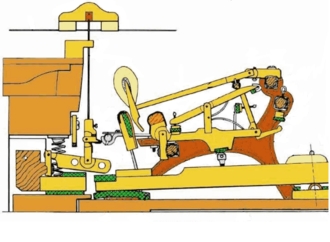| |
The Power of Sound
Music is a truly universal language. A drum beat, or a harmonious melody can be enjoyed equally by people from any culture, with no need for translation. In fact, music is perceived by a different part of the brain than the part used to process language, thus providing a unique alternative to verbal communication. Furthermore, the scope of music is primarily pleasure-oriented, whereas language is task-oriented. In fact, the value of a musical composition may be measured by the degree of listening pleasure experienced by the listener. However, complex compositions created by great composers have the capacity to elicit a wide variety of emotions in the listener, ranging from profoundly somber to radiantly ecstatic, and experiments have shown that most listeners will experience the various moods of music in broadly the same way.
The power of music to convey emotion has been used craftfully over the centuries by minstrels, artists, churches, armies, governments and salespersons, and the mechanism which governs the inner workings of music have been studied and codified over the centuries. The composers of Gregorian chants never ventured away from vocal unison, in the attempt to convey a feeling of simple beauty and purity, while modern jazz music can be highly terse and dissonant in its struggle to reflect the complexity of modern cosmopolitan emotions. For these reasons, the value of music in all cultures is incalculable. To eliminate music is equivalent to eliminating a unique doorway to the human soul and to the essence of man's emotional universe.
Much like the development of the microscope, the further the possibilities of music are developed, the more the palette of human emotions can be explored. Every era of musical development and every stylistic innovation have brought about a deeper understanding of the complexity of human existence: consider the deeply structured complexity of Bach's baroque compositions, or the apparently unstructured sonic chaos of Schoenberg's atonal compositions. They are all expressions of human creativity, encompassing the aspirations and contradictions of man's quest for self-expression. The very act of creating music is a profoundly human experience, launching the composer onto a journey of self-discovery, while enveloping the listener in a world of fascination and wonder.
|
|

While the process of composing is not a simple one by any means, it does progress by discreet stages, and like all arts, it can be deepened and perfected, almost infinitely. The composer's skill set is quite elaborate: it requires understanding and often playing numerous instruments, the knowledge of musical notation, and the ability to analyze existing works. Furthermore, the development of musical instrument technology has broadened the composer's palette (consider the transitions from the harpsichord to the pianoforte to the digital synthesizer). Also, the most recent advances in music notation software has made the process of orchestration much simpler, while experimentation with musical ideas and sounds has been greatly facilitated by digital audio workstations (DAWs).
Yet the frontiers of music composition technology are still wide open and little explored. There is no doubt that just as the advancement of computer technology has changed the face of architecture, design, physics, astronomy, mathematics, animation, and music recording and distribution, so will it affect the advancement of music composition. But for advances in the craft of composition to be truly revolutionary, the technology that enables it must be rooted in musical tradition. It is important to use technology not as a substitute for the creative process, but as a new tool for channeling the musicians creativity. In this way, music will retain its human essence, while advancing the level of musical expression.
|
|
